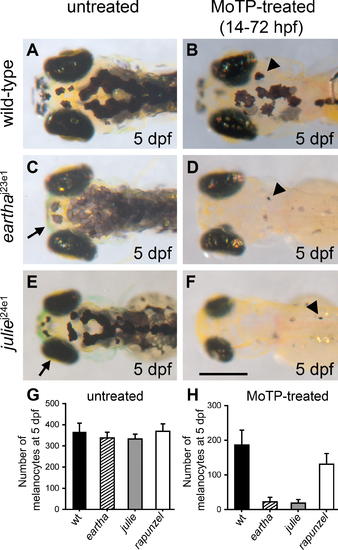|
Mutations Specific to Melanocyte Regeneration (A–F) earthaj23e1 (C) and juliej24e1 mutants (E) both develop larval melanocyte patterns nearly identical to wild-type larvae (A), although melanocytes in earthaj23e1 mutants appear to have lighter pigmentation than that in the wild-type larvae. Upon larval melanocyte ablation by MoTP (14–72 hpf), wild-type larvae (B) regenerate many melanocytes at 5 dpf (arrowhead in [B]), while earthaj23e1 (arrowhead in [D]) and juliej24e1 (arrowhead in [F]) mutants largely fail to regenerate melanocytes. Additional phenotypes are indicated by an arrow in (C) marking a shortened pharyngeal skeleton in earthaj23e1 mutants and by an arrow in (E) indicating small eyes and head in juliej24e1 mutants. (G–H) The numbers of melanocytes in the untreated (G) and MoTP-treated (H) wild-type and mutant larvae at 5 dpf. Scale bar: 300 μm.
|

